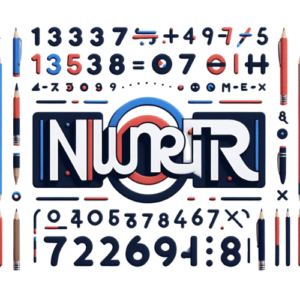
Geometry, a branch of mathematics focused on the properties and relations of points, lines, surfaces, and solids, is more than just theoretical. Its formulas have significant real-world applications that can make problem-solving in everyday life and professional fields much easier. Here’s a guide on how to effectively use geometry formulas for practical purposes, with tips and tricks to maximize their utility.
1. Understanding the Basics of Geometry Formulas
Before diving into applications, it’s essential to grasp fundamental geometry formulas. These include:
- Area of a Circle: A=πr2A = \pi r^2A=πr2
- Circumference of a Circle: C=2πrC = 2 \pi rC=2πr
- Area of a Triangle: A=12×b×hA = \frac{1}{2} \times b \times hA=21×b×h
- Pythagorean Theorem: a2+b2=c2a^2 + b^2 = c^2a2+b2=c2
- Volume of a Rectangular Prism: V=l×w×hV = l \times w \times hV=l×w×h
2. Applying Geometry in Home Design and Renovation
Geometry is crucial in home design and renovation. For instance, calculating the area of flooring needed requires the use of area formulas. If you’re tiling a floor, measure the length and width of the room and use the formula for the area of a rectangle (Area = length × width).
Tip: Use the Pythagorean Theorem to check if corners are right angles by measuring the diagonals. If they’re equal, the corners are square.
3. Geometry in Landscaping and Garden Design
When planning a garden or landscaping, geometry helps in determining the amount of materials required. For example, if you’re designing a circular garden bed, use the area formula for a circle to calculate the amount of soil or mulch needed.
Tip: For irregularly shaped areas, break the space into smaller geometric shapes, calculate each area separately, and then sum them up.
4. Geometry in Construction and Architecture
In construction and architecture, precise measurements are critical. Geometry formulas are used to ensure structural integrity and optimize space. For instance, architects use the Pythagorean Theorem to ensure that buildings are properly aligned and squared.
Tip: To find the slope of a roof, use the tangent function from trigonometry (which is a part of geometry). This helps in calculating how steep the roof will be and affects the type of roofing material needed.
5. Geometry in Everyday Situations
Even in daily life, geometry plays a role. For example, when packing a suitcase or arranging furniture, knowing how to calculate volume and area helps maximize space.
Tip: For packing, measure the dimensions of items and the suitcase to ensure everything fits efficiently. Use volume formulas to calculate how much space each item will occupy.
6. Using Geometry for Financial Calculations
Geometry is also useful in financial contexts, such as in determining the area of land for real estate investments or the layout of a new business space. Calculating the area of different plots can help in comparing their values and making informed decisions.
Tip: When considering irregular plots, break them down into geometric shapes, calculate each area, and sum them to find the total area.
7. Educational Applications of Geometry
Geometry is fundamental in education, particularly in teaching spatial reasoning and problem-solving skills. For students, understanding how to apply geometry formulas can enhance their ability to tackle complex problems.
Tip: Use real-world examples, like calculating the area of a classroom wall for painting, to make lessons more relatable and engaging.
8. Tools and Resources for Geometry
To efficiently use geometry formulas, various tools and resources are available. Online calculators can quickly compute areas and volumes, while software programs assist in complex geometric modeling.
Tip: Familiarize yourself with geometry software and online tools to streamline calculations and ensure accuracy in your work.
9. Common Mistakes and How to Avoid Them
While applying geometry formulas, it’s easy to make mistakes. Common errors include miscalculating dimensions, using incorrect formulas, or failing to account for units.
Tip: Double-check your calculations and ensure that all measurements are in the same unit before applying formulas. Use dimensional analysis to avoid unit conversion mistakes.
Conclusion
Geometry formulas offer powerful solutions for a wide range of real-world applications. By understanding and applying these formulas effectively, you can enhance your ability to solve practical problems, from home design and landscaping to construction and financial calculations. Keep these tips and tricks in mind to make the most of geometry in your everyday life.



